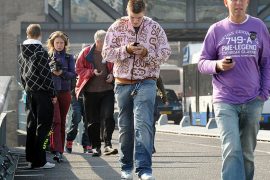Engineers have been pushing the envelope in the transport industry to offer safer and faster means of getting from place to place. We already have a few remarkably well equipped electric cars with limited self driving capabilities, maglev trains that travel faster than the speed of sound, and roads that generate electricity from sunlight. Most of these innovative new technologies can be expected to go mainstream in the near-future. But what about the distant future? Here are some of the craziest and most daring transport designs that engineers and futurists expect to see in the next century.
Segmented Trains – By the end of the century, there’s a good chance all railway networks and rail cables will be adapted for magnetic levitation. China and Japan have already adopted this technology on a large scale. Soon the rest of the world will follow and trains are likely to get a lot faster. The only thing slowing them down would be the numerous stops on a specific route. If you wanted to go from Tokyo to Osaka onboard Japan’s bullet train, you’d have to stop on three stations on the way. That could be a thing of the past if trains were designed in modular segments that separate off when a certain section of passengers need to alight. A bullet train that never stops could be one of the most efficient means of transport in the future.
Smart Roads – Existing roads could be retrofitted with some incredibly useful technology. Markers could glow in the dark to help drivers navigate better. Glowing roads are already being tested in the Netherlands. Road lights could be made interactive so that they only light up when motion detectors notice someone using the road. This would help conserve energy. Electric priority lanes could help electric cars charge while in motion. It’s easy to assume inductive charging will advance enough to allow wireless car charging by the end of the century. Smarter roads will work alongside cars to make the journey safer and easier.
Sharing Pods – With the rise of Airbnb, Uber, and Snapgoods, experts are already predicting the end of an ownership-based economy. Goods, homes, and cars could all be part of a central network that is shared by everyone. Autonomous pods and cars could be available in most countries by the end of the century, which means owning a car would soon be seen as a hobby rather than a necessity.
Getting from A to B is bound to get a lot more interesting over the course of this century. These are just some of the ways transportation might change over the years. But it’s hard to predict which innovative new technologies currently in the pipeline will prove to be genuine game-changers. The only thing that’s certain is a brighter future for public transport.







